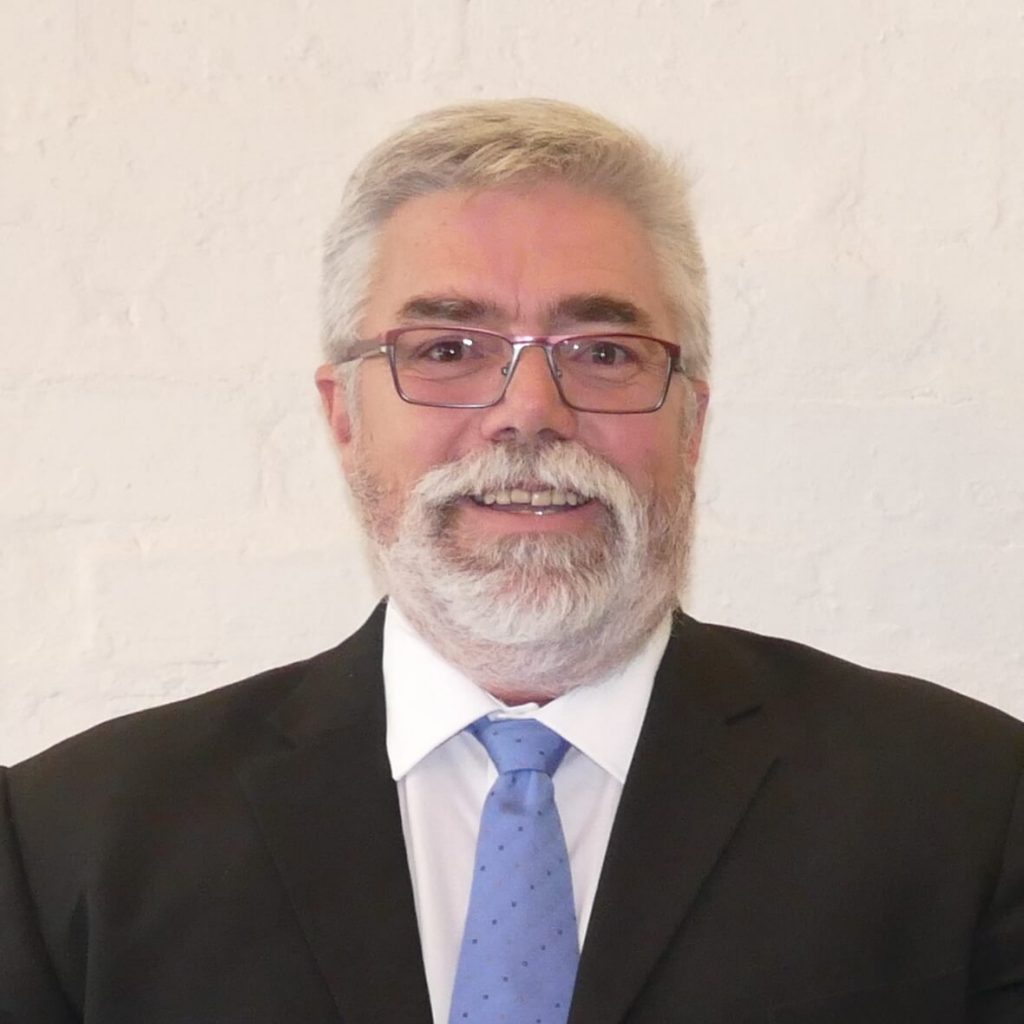Meet The Team

wayneb@durstsa.co.za


orderskzn@durstsa.co.za

erich@durstsa.co.za
Our Company
Durst is a world-leading manufacturer of advanced digital production technologies. In the active business areas, Durst is the first choice and a preferred partner for the transformation and digitization of industrial production processes. Durst is a family company with an 80-year history, where the values are focused on innovation, customer orientation, sustainability and quality.
Vision
We focus on efficient and environmentally friendly production technologies that are facilitated by digital change. Based on our independence as a family-owned company, our values, talents, and financial strength, we continuously invest in competencies and innovation. We strive for customer excellence and quality in all steps involved.
Mission
To earn loyalty and respect from our customers and employees by providing high-tech systems and solutions in the highest quality and by being true to ourselves:
Our History
The company history of Durst Phototechnik AG is closely related to the biography of Julius Durst, without whom the company Durst, which proudly bears his name today, would not exist. Although the technology today make us a completely different company compared with the early times of Julius Durst, his drive for innovation in the field of visual communication still shape the spirit and the culture of our business today.

The History Of Durst
Durst
History

Julius and Gilbert Durst
Everything stemmed from the passion shared by the two brothers from Bressanone, whose photographic talent was anything but casual. Their father, a painter, had always made photography a hobby. Their mother, daughter of an engineer, even owned darkroom equipment. And there were lots of photography buffs in the rest of the family.
To this interest, cultivated from childhood, was added a particular technical talent. The brothers designed and built hunting gear, kites, gliders and radio equipment and as youths even built grass skis, bobsleds and go-karts.
But their main interest was still photography. Even their studies inevitably went in that direction: while Julius (1909-1964), the inventor, learned the necessary skills at the trade school in Constance, Gilbert (who would become manager) trained at a famous photography studio in Innsbruck. But these commitments didn’t keep them from continuing to invent and construct.
The Oberrauch family
“We can’t go on like this”, Julius Durst declared after four years in business. Processing the patents developed in-house for photographic equipment required greater capital and a company enlargement. So the search for a suitable financial backer began in Bolzano. The famous “Alois Oberrauch und Söhne” leather-goods factory, founded in 1865, showed interest in the Durst brother’s project, leading to an Oberrauch-Durst partnership in 1933. From then on the Dursts handled photographic techniques while the Oberrauch family ran the business side. This combination of know-how and capital quickly bore fruit and in 1936 the brothers officially founded Durst Phototechnik AG. Now they needed a design studio, a production department and another for mounting. So in Bressanone they leased the former Seidner beer factory. Finally they could start up mass production and, a short while later, world distribution of modern photographic techniques…

1929
The initial hobby soon became a paying profession. In 1929 Julius and Gilbert dared to take the big step and set up their own business. At home they repaired and built photographic equipment of every type. A friend acted as dealer and payment collector.
Every new order was tailored to customer requirements and based on a specific design. In this period they created elegant individual pieces, such as cinematographic accessories like reel-winders and viewers, stamp screeners, darkrooms, trimmers for paper in rolls and photocopying machines for postcards. With a “Magic Lantern” they attempted their first enlargements. As we said, every product was customdesigned, while individual components were made by a Bressanone blacksmith on his forge, in totally primitive conditions and using obsolete machinery. “You can’t imagine how we suffered”, Gilbert Durst once said.

1934
The Alto Adige (southern Tyrol) was a touristattraction. And so were postcards of it. The local ones were excellent in quality but definitely too expensive. Rationalization was the answer.
In 1934 the famous Durst copier began operating. This was a sophisticated machine able to thriftily reproduce many photographs in limited copies. Demand was high but still too limited, not enough to keep the business afloat. So they decided to get into other, more remunerative, sectors.

1934
To protect themselves from idea theft, from 1934 on they took their inventions to the patent office. Those were the days of the first patents for enlarging machines, photocopiers, innovative frames for negatives and auto-focus. In subsequent years, down to the present, Durst was granted many copyrights, even on the international level. Great inventive ability and small but decisive innovations soon üallowed Durst to conquer the world market.
1936
Durst Phototechnik AG was officially founded in January 1936.

1938
Right from the start the biggest dream was creating a serially-made camera. The dream came true in 1938 with the first Durst camera, called Gil. This was a 6 x 9 box camera using photographic film. Thanks to its double shutter and convex surface to rest the film on – permitting better focus and clarity of image in the areas near the edges – image quality was definitely superior to those of other cameras in the same price range.
Building a camera required much more sophisticated mechanics and so the Durst brothers inaugurated a department devoted exclusively to camera production.

1942
In 1942 began mass production of a huge enlarger for 30 x 40 cm negatives.
Soon after, creating very thin pressure-cast aluminum components made it possible to create sophisticated designs. In fact, in addition to smooth running the machine had to look good, and the use of special lacquers gave an elegant appearance to its surfaces.
1943 / 1964
In 1943 an enlarger equipped with a motor and mercury-vapor bulb set the stage for a new generation of equipment. It was produced following the principles already adopted: “quality, stability, precision mechanics, perfect optical axes, the finest optical equipment available, endurance”.
A rapid recovery from the post-World War II slump. In 1946 the Gil was followed by the Duca, a pocket camera for snapshots with a spool-less 12-shot roll of film.
Professionals considered it an “ingenious machine” noteworthy not only for its high technical level but above all for its “absolutely original oval shape”. Even the colors were up-to-date: lacquered in black, brown, blue, red or white. The Duca showed off with every shot.

1953
Durst’s sales abroad continued to grow. Even in the 40s and 50s a good part of its production was for the international market. In 1953 the first distribution company was founded, the Deutsche Durst GmbH, with offices in Munich.

1956
The last and most spectacular of the cameras was the Automatica. The first camera with an automatic exposure meter and pre-selected diaphragm. A special camera, created thanks to fortuitous chance: towards the end of 1944 an American fighter plane had been shot down in Bressanone and its instruments scattered through the forest. Among them was a tiny control device that Julius Durst found and studied at length until he invented the first automatic exposure meter. The Automatica was presented in 1956. When production ended in 1963 for questions of cost the era of Durst cameras also came to a close. Its enlargers began to reign supreme in the company’s product range.
The immediate question was: black & white or color? Durst decided to give several of its highly esteemed enlargers a color head.
In the 1950s Durst was one of the few companies offering a lot of jobs in tiny Bressanone, at the time visibly undersized, industrially.

1964-1966
This was the year the new production plant starting operating. After the 1964 car accident that cost Julius Durst, the inventive builder, his life, the young team he had organized took the company ahead, ambitiously and courageously. Developing, for example, the first color head that automatically controlled exposure for all film formats, from 24 x 36 mm up to 13 x 18 cm. In 1966 eleven models of products were being made, including enlargers and various types of darkroom equipment. Salient features: extremely high precision, compactness and exceptional ease in handling.

1975
The year 1975 saw the start of a new era for enlarging techniques: Magica 300/350, Durst’s first daylight enlarger, made processing perfect even without a darkroom. The second big event of the year was the birth of the first professional Color-Analyser CAN 450 for the modern photo lab.
To fully meet the demands of the enormous American market, in 1976 Durst North America Inc. was founded in Tempe, Arizona.
1977
Since dichroic filters always filter only one color from the light, three are used to produce the three primary colors (RGB) in the projection technique, while the middle ground of the wavelength of green is gotten through a band filter.
In the home-use sector the renaissance began with the first amateur analyzers. In the 60s the amateur darkroom era was thought to be over and done with. Color photos celebrated their definitive triumph but for photography buffs the chance of developing colors “with reasonable quality” seemed unachievable.
Things changed only when Durst presented the first easy-to-use models destined for amateur photographers. For a whole decade this sector proved fundamental for Durst. In 1977 it accounted for 60% of total sales.
Durst (UK) Ltd. was founded in Epsom, England and was the company’s first foreign production site.
The Closed-Loop system
The closed loop includes a system of measuring light with a microprocessor able to correct all variations in light quality before and during exposure.
With three narrow-band measuring cells in the aim-finder, the percentage of the three basic colors – blue, green and red – is measured five times per second (practically continually) and compared with the filter value while data is memorized for input and correction.
If light quality shifts from the nominal value, the color percentages are corrected by the filter’s step-by-step motor.
The system also takes into account the quality of the incorporated color filter and offsets secondary color density or other sources of error.
Even bulb replacement is no longer a problem. The system immediately recognizes the new characteristic of the light and modifies filter and density values with a maximum precision of 0.025 for density values.

1981
The leading company in the sector enthused the professional world with the first horizontal enlarger.
In the early 80s Durst also brought out a new amateur enlarger with automatic control of exposure and an incorporated analyzer … For the delight and easy use of demanding photography buffs!
The innovative Durst HL 2501 model with micro-computerized regulation and electronic focus was able to satisfy all customer requirements.
Black & white photos – the province of home darkrooms – were being increasingly supplanted by color photographs. Mini-labs, able to turn out in a day (and later in a couple of hours) color photos of acceptable quality at equally acceptable prices, contributed to the rapid decline of the amateur enlargement market; in just 5 years, they dropped from 1 million photos in 1980 to less than 400,000.
Professional labs – photographic labs as image suppliers – providing large-format and designer ads for museums, became important new groups of customers, with new and specific needs in terms of reliability, image quality and services.

1985
In 1985 Optimo and Optopia kicked off a new generation of enlargers. Their highfalutin names stood for a complete system for modern and rational image processing. Features included a new lighting system, sophisticated electronic commands and very comfortable use.
Design becomes an important factor in equipment creation Otl Aicher, founder of the Hochschule für Gestaltung in Ulm, handled Durst’s corporate design, creating a new typeface, coding colors and the gray scale. At the same time he created a new typeface, which he called Rotis, and made it the Durst typeface.
The decision to deal with the technical theme in a literary way, writing books as the expression of high-range marketing, can be traced to Otl Aicher. The first book, “Colors in Tyrol”, was introduced by Aicher himself, while the second, “Transit”, a work he greatly influenced from the graphic standpoint, was published after his death.

Modular
New products and new values in rendering terms once again constituted milestones. In the amateur sector, for example, outstanding were the well-tested Modular 70 or the Printo developer, based on a modular concept, easy to use and offering the utmost in quality.
For the less expert a “knowledgeable advisor” was Magico, a completely new, exceptional enlarger offering considerable advantages.

1992
In 1992 began intense research and development work. Presented in 1994, the Lambda 130 was the first result. Lambda is a laser printer for large formats displaying high-resolution digital texts and images on all traditional photographic supports up to a width of 127 cm.
With more than 900 installations, starting in 1995, in professional photo and reproduction labs, pre-print centers and industrial departments, Lambda inaugurated a new era in the large-format technique and set new standards in terms of image quality. “Lambda print” became a synonym for quality in the art photo sector.

1999
With the advent of inkjet technology and its growth potential, it was necessary to expand production capacity.
Thanks to generally favorable conditions in the eastern Tyrol, it was decided to open a new production plant (2750 sq m) in Lienz. July 30, 1999 saw official inauguration of the Durst Digital Technology GmbH plant in Lienz.

2001
In 2001 the Rho 160 went on the market. This was the first high-performance inkjet printer, destined for flexible, industrial digital printing of large formats and designed for use in photo labs, in serigraphy and in the print sector.
Thanks to the new technology it was now possible to print on non-glossy supports, rolls or panels, with maximum width of 160 cm and maximum thickness of 40 mm in the case of rigid supports. The printed materials could be used immediately after production, with no further work required.
After opening distribution offices in Germany, England and the United States, 2002 saw the birth of Durst France, with which the company renewed its strategy of being present on major markets.
In January 2003 the Lienz plant began the production and market introduction of the first printer designed in-house, the Rho 205, a flatbed inkjet printer 2 meters wide.

2005
Durst’s Quadro Array technology is based on Spectra nozzles. Four slots in a single heated plate with continual ink flow in an array of a total of 512 nozzles.
In 2005 Durst doubled its production space in Lienz, enlarging it to 6500 sq m, and revamped the plant to make it a high-tech point of reference. At the same time as the new plants, an “art park” was named for the company’s co-founder, Luis Oberrauch, and a “Technical Academy” for digital printing was opened. The new building hosts a whole production cycle – from the pre-printing station to a complete station for cutting and folding digitally printed packaging – and classrooms where students from all over the world learn the art of digital printing.

2006
In 2006 Durst presented Gamma 60, the world’s first industrial inkjet printer for printing ceramic tiles for flooring and facing. Thanks to use of pigmented ceramic ink that Durst developed, with Gamma 60 it is possible to use the same enamels utilized for traditional serigraphy systems.

2010
Kufstein is Austria’s hub for textile machinery and installations. So it was only natural to set up our “Textil” development center here. In Kufstein Durst has been perfecting its “Kappa” model, a revolutionary high-end printer for use on fashion textiles and clothing with water-based inks.
In addition to creating new market prospects, this printer is also ingenious in its simplicity. Furthermore, it allows for rapid changes in the patterns being used (with no need for meshes) and eco-compatible production since it uses very little water and power. The Kappa is the access door to a new business sector that is only now getting into digital. With print performance of up to 600 sq m/h in maximum resolution, the Kappa will be officially launched in Barcelona at ITMA 2011 this September.
2010
This new research center for inkjet technology, equipped with one of the most up-to-date chemistry-physics labs and a suitable scientific team, specializes in researching the bases for using inkjet printing in the energy technology, life ciences and health sectors and in security codes for brands – the products of 2018 and beyond…

2013
Another milestone in the history of the company is the development of a nozzle for printing high-viscosity, large-particle inks/liquids. This not only enables purely decorative printing, but also the integration of functional applications, where „digital glaze“ is setting the starting point in the ceramics industry. There are many other potential uses in industrial production, and, for the first time, a nozzle designed and developed entirely in-house is being used.
Another highlight is Rho „IP“, a system which will replace conventional tampon printing and which is moving in the direction of functional printing (membrane keyboards, PCBs etc.).
Core Values
Simplicity
No matter how complex the problem, success comes through simplicity.
Structure
Forms the basis for
productivity and
supports creativity.
Commitment
Is tangible among employees and clients, and measured in the overall success.
Focus on Purpose
If it doesn’t benefit
the strategy,
don’t waste energy on it.
Communication
Be on the same side. Speak the same language. Head in the same direction.
Responsilbility
Take responsibility
and be accountable
for your actions.
Agility
Think.
Respond.
Optimize.
Passion
Love it.
Change it.
Leave it.

